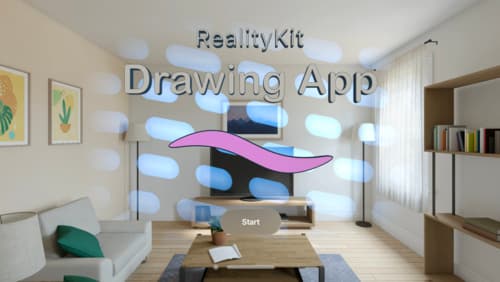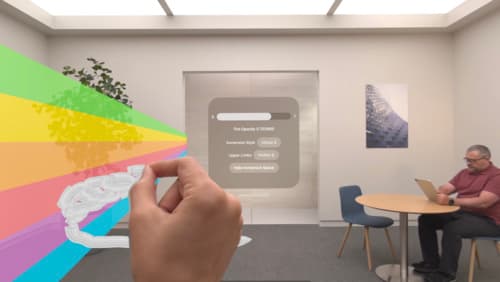AR
Asked on 2024-08-04
2 searches
Apple's WWDC 2024 featured several sessions that discussed AR (Augmented Reality) and its applications, particularly focusing on ARKit and RealityKit. Here are some key highlights:
-
Create enhanced spatial computing experiences with ARKit:
- Room Tracking: ARKit can now track rooms, allowing apps to tailor experiences based on the room's layout. This includes recognizing transitions between rooms and updating anchor data accordingly. Create enhanced spatial computing experiences with ARKit (02:30)
- Plane Detection: ARKit delivers plane detection data through plane anchors, which can be used to augment real-world surfaces. Create enhanced spatial computing experiences with ARKit (05:46)
- World Tracking: ARKit uses various sensors and cameras to perform world tracking, even in low-light conditions. Create enhanced spatial computing experiences with ARKit (09:34)
- Hand Tracking: ARKit can track hand poses, which can be used to create interactive experiences. Create enhanced spatial computing experiences with ARKit (11:38)
-
Build a spatial drawing app with RealityKit:
- Spatial Tracking: RealityKit integrates with ARKit to provide spatial tracking, including hand tracking for interactive drawing experiences. Build a spatial drawing app with RealityKit (02:43)
- User Interface: The session covers building a spatial user interface for controlling the drawing app. Build a spatial drawing app with RealityKit (05:42)
-
Render Metal with passthrough in visionOS:
- Trackable Anchors: This session explains how to use trackable anchors in ARKit to position rendered content accurately in the real world. Render Metal with passthrough in visionOS (14:49)
-
Explore object tracking for visionOS:
- Anchor Virtual Content: This session demonstrates how to use RealityKit and ARKit APIs to anchor virtual content to real-world objects. Explore object tracking for visionOS (09:28)
These sessions provide a comprehensive overview of the new features and capabilities in ARKit and RealityKit, enabling developers to create more immersive and interactive AR experiences.

Explore object tracking for visionOS
Find out how you can use object tracking to turn real-world objects into virtual anchors in your visionOS app. Learn how you can build spatial experiences with object tracking from start to finish. Find out how to create a reference object using machine learning in Create ML and attach content relative to your target object in Reality Composer Pro, RealityKit or ARKit APIs.

Build a spatial drawing app with RealityKit
Harness the power of RealityKit through the process of building a spatial drawing app. As you create an eye-catching spatial experience that integrates RealityKit with ARKit and SwiftUI, you’ll explore how resources work in RealityKit and how to use features like low-level mesh and texture APIs to achieve fast updates of the users’ brush strokes.

Render Metal with passthrough in visionOS
Get ready to extend your Metal experiences for visionOS. Learn best practices for integrating your rendered content with people’s physical environments with passthrough. Find out how to position rendered content to match the physical world, reduce latency with trackable anchor prediction, and more.
